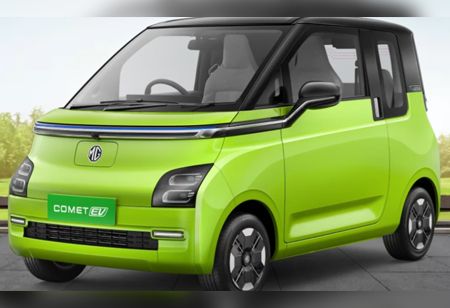
The electric vehicle (EV) revolution is well and truly underway globally. India, too, is stepping on the EV pedal now. The government aims for 30% of private cars, 70% of commercial vehicles, and 80% of two-wheelers and three-wheelers to be electric by 2030. What’s driving this EV adoption? What benefits do EVs provide over conventional internal combustion engine (ICE) vehicles? Let’s find out.
One of the biggest advantages of electric cars is significantly lower running costs compared to petrol or diesel vehicles. Electric cars have fewer moving parts, zero emissions, and no engine maintenance costs. You just need to charge the battery to keep running.
According to some estimates, running an EV in India, such as the MG Comet, can be up to six times cheaper per kilometre than a petrol or diesel car. Furthermore, the competitive MG Comet price makes transitioning to an electric vehicle even more appealing.
Another significant benefit is drastically reduced maintenance costs. Electric cars have few moving parts compared to internal combustion engines with several hundred components. As a result, electric vehicles require far less periodic servicing and have lower wear and tear.
Over a 5-7 year ownership period, maintenance costs for an EV can be up to 40-50% lower than those of a petrol or diesel car. The savings add up over time and help recover some of the higher upfront investment in an electric vehicle.
Switching to an EV is one of the most significant steps you can take to reduce your carbon footprint. Unlike petrol or diesel cars, EVs have no tailpipe emissions, which emit greenhouse gases and pollutants.
Even when considering emissions during electricity generation, EVs can reduce lifetime carbon emissions by nearly 50% compared to conventional cars. As India increases renewable energy capacity to meet its climate targets, running an EV here will become even greener.
Many people perceive electric cars as boring and slow. The reality could not be more different! Electric cars provide a silky, smooth, quiet driving experience with incredible off-the-line acceleration.
Any petrol or diesel vehicle's instant torque available from a standstill is unmatched. EVs give you a genuine thrill every time you hit the accelerator.
Traffic noise pollution is a major issue in Indian cities, especially when people honk needlessly at signals and speed breakers. Electric vehicles, with their near-silent operation, provide a solution.
At low speeds, EVs make almost no audible noise when running. You hear only the tyre noise. This makes our cities more peaceful and livable. Even at higher speeds, EVs are much quieter than engine sounds from petrol or diesel cars.
Many state governments offer discounts or waivers on road tax and registration charges for electric cars to incentivise EV adoption. For example, the Delhi government has exempted EVs from road tax.
Most prospective EV buyers wonder - where do I charge an electric car? Home charging is the most convenient option, using a simple wall socket or dedicated home charger. With home charging, you wake up daily to a full “tank”.
There is a growing network of public EV charging stations for longer trips across significant highway routes and cities. Leading hotspots like Delhi, Mumbai, Bengaluru, Hyderabad, Ahmedabad and more have hundreds of operational charging points.
Electric cars tend to have lower depreciation compared to petrol or diesel vehicles. This is driven by two factors: government support for EVs, which maintains a higher resale value, and lower total cost of ownership for second or third owners, given the running cost benefits.
Lower depreciation directly puts more money in your pocket when reselling an electric car. For instance, comparing the Bolero price ( of a used one) with the resale value of an electric vehicle will reveal the substantial financial advantage EVs offer in the long term.
So what are you waiting for? Take a test drive of the electric car of your choice today! Make the switch to electric to power your drives in silence while saving money and reducing environmental impact. It’s the future of mobility, and the time is now.
We use cookies to ensure you get the best experience on our website. Read more...